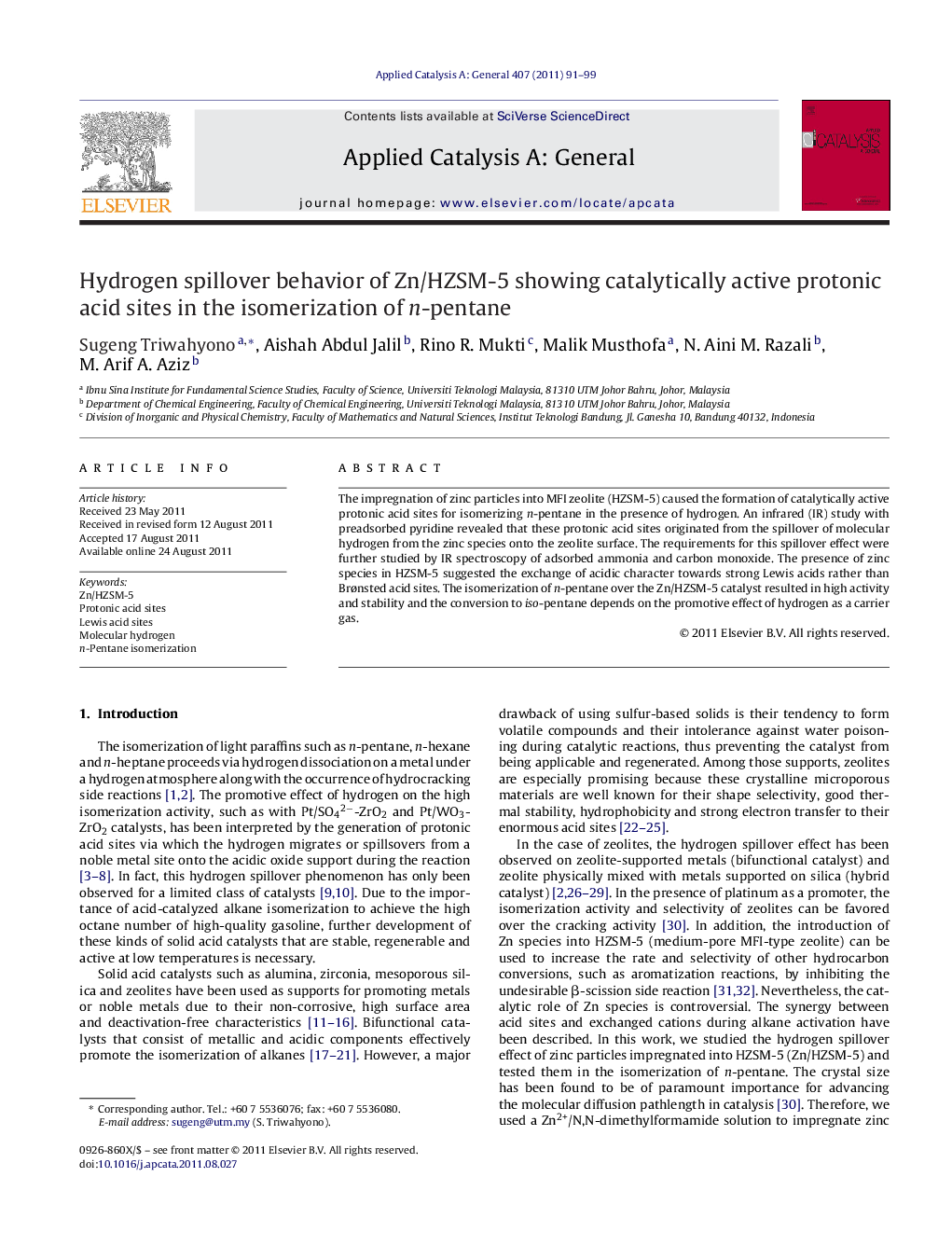| Article ID | Journal | Published Year | Pages | File Type |
|---|---|---|---|---|
| 41296 | Applied Catalysis A: General | 2011 | 9 Pages |
The impregnation of zinc particles into MFI zeolite (HZSM-5) caused the formation of catalytically active protonic acid sites for isomerizing n-pentane in the presence of hydrogen. An infrared (IR) study with preadsorbed pyridine revealed that these protonic acid sites originated from the spillover of molecular hydrogen from the zinc species onto the zeolite surface. The requirements for this spillover effect were further studied by IR spectroscopy of adsorbed ammonia and carbon monoxide. The presence of zinc species in HZSM-5 suggested the exchange of acidic character towards strong Lewis acids rather than Brønsted acid sites. The isomerization of n-pentane over the Zn/HZSM-5 catalyst resulted in high activity and stability and the conversion to iso-pentane depends on the promotive effect of hydrogen as a carrier gas.
Graphical abstractFigure optionsDownload full-size imageDownload high-quality image (200 K)Download as PowerPoint slideHighlights► Zn2+ exchanged the Brønsted acid sites to Lewis acid sites. ► Active protonic acid sites are formed from H2 via hydrogen spillover mechanism. ► Lewis acid sites and Zn species are indispensable in the formation of H+. ► The catalytic activity of Zn/HZSM-5 is strongly determined by the presence of H+. ► Low activity was observed on Zn-free HZSM-5 under H2 carrier gas.
